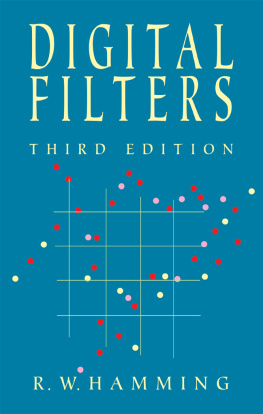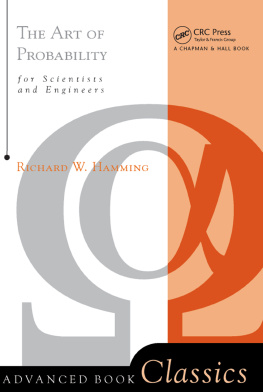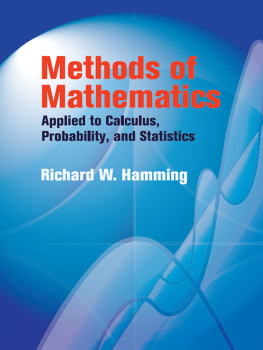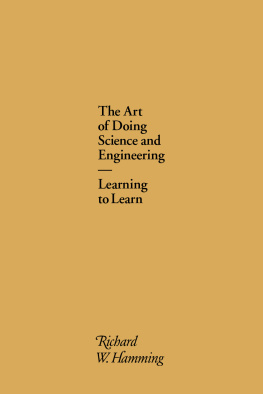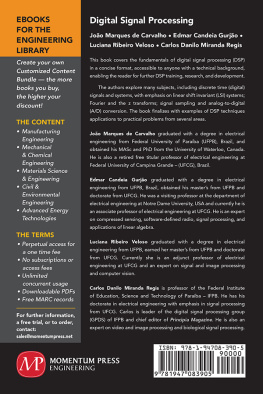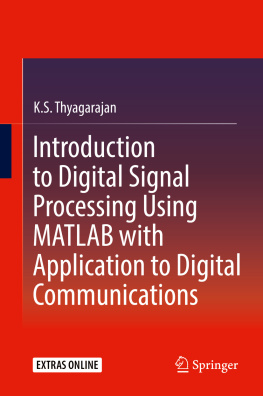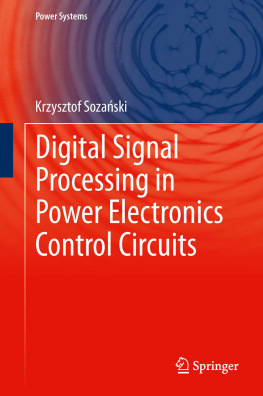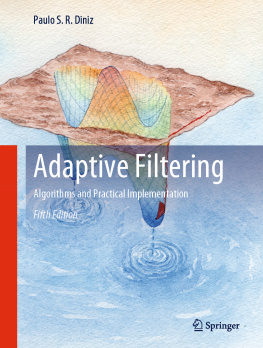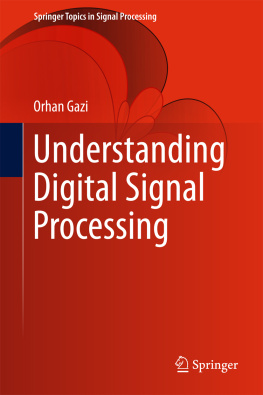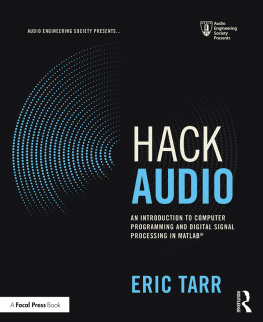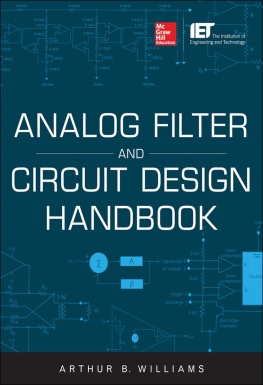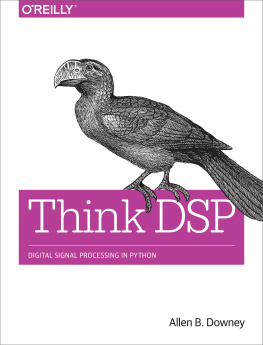Richard W. Hamming - Digital filters
Here you can read online Richard W. Hamming - Digital filters full text of the book (entire story) in english for free. Download pdf and epub, get meaning, cover and reviews about this ebook. year: 1997, publisher: Dover Publications, genre: Science. Description of the work, (preface) as well as reviews are available. Best literature library LitArk.com created for fans of good reading and offers a wide selection of genres:
Romance novel
Science fiction
Adventure
Detective
Science
History
Home and family
Prose
Art
Politics
Computer
Non-fiction
Religion
Business
Children
Humor
Choose a favorite category and find really read worthwhile books. Enjoy immersion in the world of imagination, feel the emotions of the characters or learn something new for yourself, make an fascinating discovery.
- Book:Digital filters
- Author:
- Publisher:Dover Publications
- Genre:
- Year:1997
- Rating:5 / 5
- Favourites:Add to favourites
- Your mark:
- 100
- 1
- 2
- 3
- 4
- 5
Digital filters: summary, description and annotation
We offer to read an annotation, description, summary or preface (depends on what the author of the book "Digital filters" wrote himself). If you haven't found the necessary information about the book — write in the comments, we will try to find it.
Digital filters — read online for free the complete book (whole text) full work
Below is the text of the book, divided by pages. System saving the place of the last page read, allows you to conveniently read the book "Digital filters" online for free, without having to search again every time where you left off. Put a bookmark, and you can go to the page where you finished reading at any time.
Font size:
Interval:
Bookmark:
DIGITAL FILTERS
Third Edition
R. W. HAMMING
Bell Laboratories
DOVER PUBLICATIONS, INC.
Mineola, New York
Copyright
Copyright 1989 Lucent Technologies
All rights reserved.
Bibliographical Note
This Dover edition, first published in 1998, is an unabridged and slightly corrected republication of the work first published by Prentice-Hall, Inc., Englewood Cliffs, New Jersey in 1989. This work was written while the author was with Bell Laboratories. This Dover edition is published by special arrangement with Bell Laboratories, Lucent Technologies.
Library of Congress Cataloging-in-Publication Data
Hamming, R. W. (Richard Wesley), 1915
Digital filters / R. W. Hamming.
p. cm.
Originally published: 3rd ed. Englewood Cliffs, NJ : Prentice-Hall, 1989.
Includes bibliographical references and index.
ISBN 0-486-65088-X (pbk.)
1. Digital filters (Mathematics) I. Title.
QA297.H26 1998 | |
621.3815324dc21 | 97-51370 |
CIP |
Manufactured in the United States by Courier Corporation
65088X07
www.doverpublications.com
Contents
Preface to the Third Edition
This edition retains the same basic approach of the earlier editions of stressing fundamentals; however, some changes have been made to reflect the fact that increasingly often a digital filter course is the first course in electrical engineering and the field of signal processing. To meet these needs two main changes have been made: (1) the inclusion of more material on the z-transform, which is often used in later courses (though the constant use of the formalism tends to obscure the ideas behind the manipulations), and (2) the inclusion of more examples and exercises. There are, of course, many minor changes to clarify and adapt the material to current uses.
In the years since I wrote the first edition I have become increasingly convinced of the need for a very elementary treatment of the subject of digital filters. The need for an elementary introduction comes from the fact that many of the people who most need the knowledge are not mathematically sophisticated and do not have an elaborate electrical engineering background. Thus this book assumes only a knowledge of the calculus and a smattering of statistics (which is reviewed in the text). It does not assume any electrical engineering background knowledge. Actually, experience seems to show that a prior knowledge of the corresponding theory of analog filters often causes more harm than good! Digital filtering is not simply converting from analog to digital filters; it is a fundamentally different way of thinking about the topic of signal processing, and many of the ideas and limitations of the analog method have no counterpart in the digital form.
The subject of digital filters is the natural introduction to the broad, fundamental field of signal processing. The power and basic simplicity of digital signal processing over the older analog is so great that whenever possible we are converting present analog systems to an equivalent digital form. But much more important, digital signaling allows fundamentally new things to be done easily. The availability of modern integrated-circuit chips, as well as micro- and minicomputers, has greatly expanded the application of digital filters.
Digital signals occur in many places. The telephone company is rapidly converting to the use of digital signals to represent the human voice. Even radio, television, and hi-fi sound systems are moving toward the all digital methods since they provide such superior fidelity and freedom from noise, as well as much more flexible signal processing. The space shots use digital signaling to transmit the information from the planets back to Earth, including the extremely detailed pictures (which were often processed digitally here on Earth to extract further information and to form alternate views of what was originally captured by the cameras in space). Most records of laboratory experiments are now recorded in digital form, from isolated measurements using a digital voltmeter to the automatic recording of entire sets of functions via a digital computer. Thus these signals are immediately ready for digital signal processing to extract the message that the experiment was designed to reveal. Economic data, from stock market prices and averages to the Cost of Living Index of the Bureau of Labor Statistics, occur only in digital form.
Digital filtering includes the processes of smoothing, predicting, differentiating, integrating, separation of signals, and removal of noise from a signal. Thus many people who do such things are actually using digital filters without realizing that they are; being unacquainted with the theory, they neither understand what they have done nor the possibilities of what they might have done. Computer people very often find themselves involved in filtering signals when they have had no appropriate training at all. Their needs are especially catered to in this book.
Because the same ideas arise in many fields there are many cross connections between the fields that can be exploited. Unfortunately each field seems to go its own way (while reinventing the wheel) and to develop its own jargon for exactly the same ideas that are used elsewhere. One goal of this revision is to expose and reduce this elaborate jargon equivalence from the various fields of application and to provide a unified approach to the whole field. We will adopt the simplest, most easily understood words to describe what is going on and exhibit lists of the equivalent words from related fields. We will also use only the simplest, most direct mathematical tools and shun fancy mathematics whenever possible.
This book concentrates on linear signal processing; the main exceptions are the examination of roundoff effects and a brief mention of Kalman filters, which adapt themselves to the signal they are receiving.
The fundamental tool of digital filtering is the frequency approach, which is based on the use of sines and cosines rather than on the use of polynomials (as is conventional in many fields such as numerical analysis and much of statistics). The frequency approach, which leads to the spectrum, has been the principal method of opening the black boxes of nature. Examples run from the early study of the structure of the atom (using spectral lines as the observations) through quantum mechanics (which arose from the study of the spectrum of black-body radiation) to the modern methods of studying a system (for purposes of modeling and control) via the spectrum of the output as it is related to the input.
There appears to be a deep emotional resistance to the frequency approach. And even electrical engineers who use it daily often have only a slight understanding of why they are using the eigenfunction approach and the role of the eigenvalues. In numerical analysis there is almost complete antipathy to the frequency approach, while in statistics there is a great fondness for polynomials (without ever examining the question of which set of functions is appropriate). This book shows clearly why the sines and cosines are the natural, the proper, the characteristic functions to use in many situations. It also approaches cautiously the usual traumatic experience (for most people) of going from the real sines and cosines to the complex exponentials with the mysterious  their greater convenience in use eventually compensates for the initial troubles and provides more insight.
their greater convenience in use eventually compensates for the initial troubles and provides more insight.
The text includes an accurate (but not excessively rigorous) introduction to the necessary mathematics. In each case the formal mathematics is postponed until the need for it is clearly seen. We are interested in presenting the
Next pageFont size:
Interval:
Bookmark:
Similar books «Digital filters»
Look at similar books to Digital filters. We have selected literature similar in name and meaning in the hope of providing readers with more options to find new, interesting, not yet read works.
Discussion, reviews of the book Digital filters and just readers' own opinions. Leave your comments, write what you think about the work, its meaning or the main characters. Specify what exactly you liked and what you didn't like, and why you think so.

